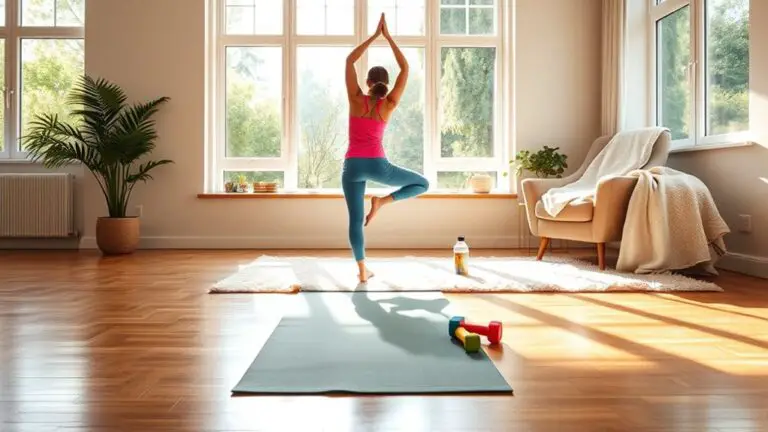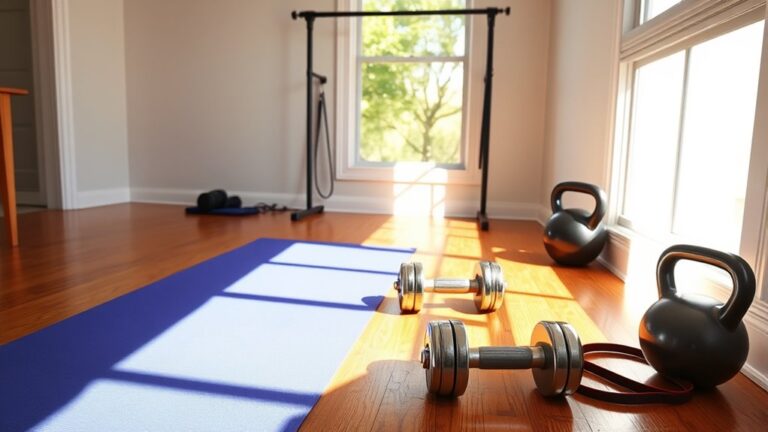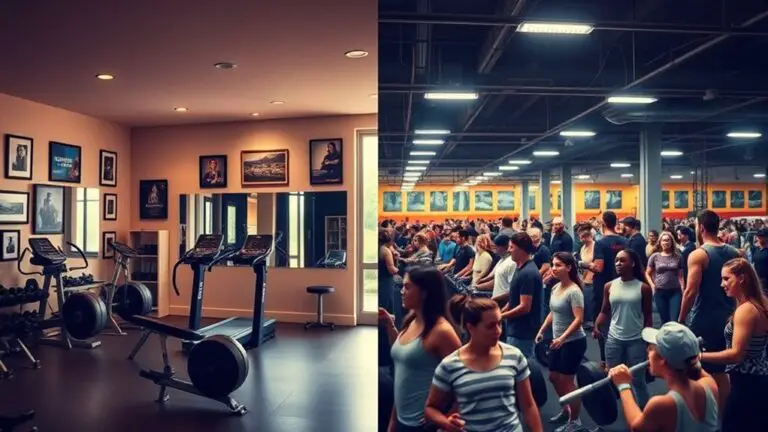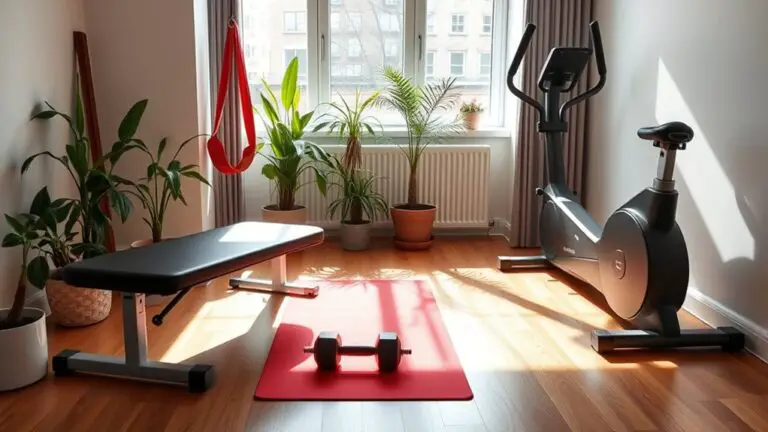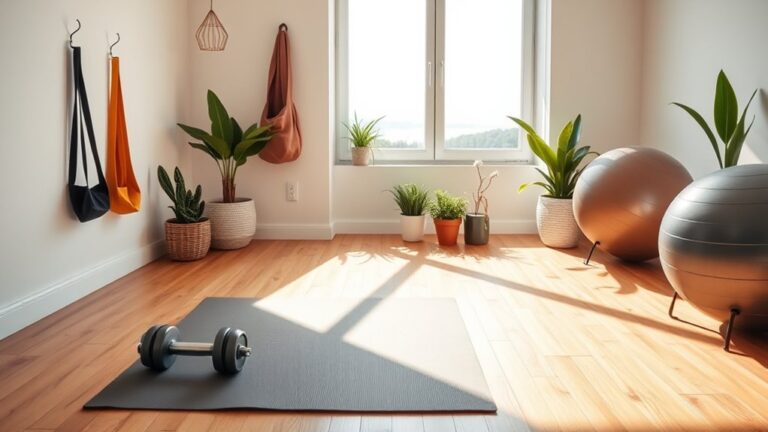The Best VR Cycling Simulators for Indoor Training
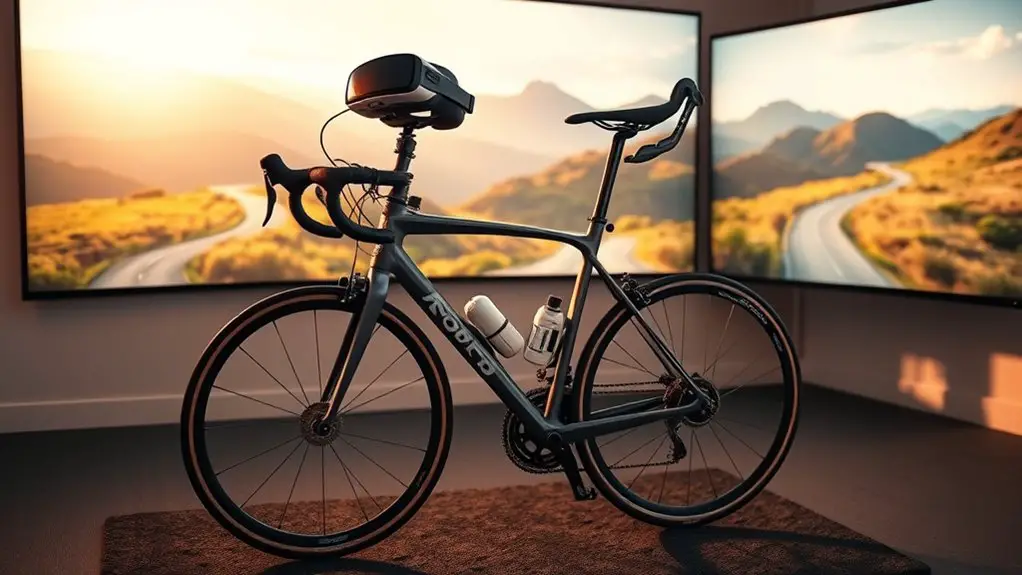
If you’re looking for the best VR cycling simulators for indoor training, consider options like Zwift, Rouvy, and TrainerRoad. These platforms offer immersive environments, structured workouts, and real-time performance feedback. You’ll enjoy dynamic landscapes and can even join global events with friends. Features such as realistic terrain simulation and customizable routes enhance your experience. With the right setup, you can maximize your workouts. Discover even more insights and tips to optimize your VR cycling journey ahead!
What Is a VR Cycling Simulator?

A VR cycling simulator is an innovative piece of technology that combines virtual reality with cycling to create an immersive training experience. You’ll find that this cutting-edge cycling technology enhances your workouts by allowing you to ride through stunning virtual landscapes or simulated racing environments. By wearing a VR headset, you’ll be transported to places you might never bike in real life, all while pedaling indoors.
These simulators often integrate advanced sensors and smart trainers, giving real-time feedback on your performance. You can track your speed, distance, and heart rate, making your training sessions more effective. Plus, the social aspect of VR cycling can’t be overlooked; you can compete with friends or join virtual cycling events worldwide. As you explore this technology, you’ll discover that it not only transforms your indoor cycling routine but also makes it more engaging and enjoyable.
Benefits of Using VR Cycling Simulators
Using a VR cycling simulator can greatly enhance your indoor training experience in several ways. First, it offers significant health benefits by providing a full-body workout that improves cardiovascular fitness and strengthens your muscles. You’re not just pedaling; you’re engaging in an immersive environment that keeps your heart rate elevated, making your training sessions more effective.
Moreover, VR cycling simulators deliver a motivation boost that traditional indoor cycling often lacks. By simulating real-world terrains and competitive scenarios, they make your workouts feel more dynamic and exciting. You’ll find yourself setting and achieving goals while enjoying stunning virtual landscapes, which can transform tedious sessions into exhilarating adventures.
Lastly, social features allow you to connect with other cyclists, fostering a sense of community that further enhances your commitment to regular training. Altogether, these factors make VR cycling simulators a powerful tool for anyone looking to improve their fitness and enjoy their indoor cycling sessions.
Top VR Cycling Simulators on the Market
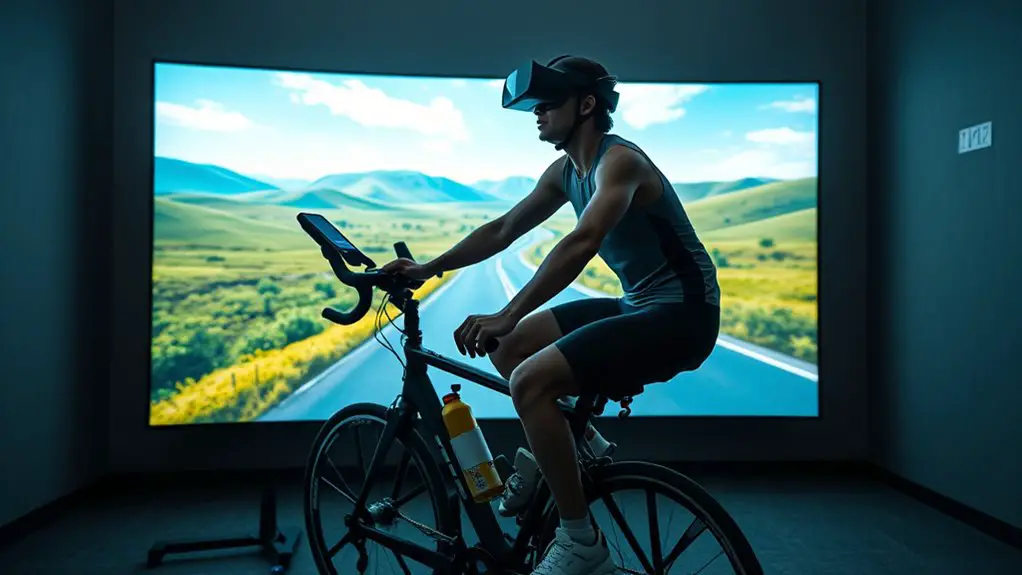
When choosing a VR cycling simulator, you’ll want to contemplate the immersive experience it offers, how well it integrates with your existing equipment, and the variety of training programs available. These factors can greatly enhance your indoor cycling sessions and make training more enjoyable. Let’s explore some of the top options on the market that excel in these areas.
Immersive Experience Features
While many indoor cycling setups promise a great workout, the best VR cycling simulators elevate your training by immersing you in breathtaking environments and realistic scenarios. You’ll find yourself pedaling through picturesque landscapes, from vibrant mountains to serene beaches, making each session feel like an adventure. These immersive environments are designed to engage your senses, enhancing your commitment to the workout.
Moreover, the advanced sensory feedback systems provide realistic resistance, replicating the feeling of climbing hills or racing on flat terrain. This combination not only motivates you to push harder but also keeps your mind engaged, transforming mundane indoor cycling into an enthralling experience. With these features, you’re not just exercising; you’re exploring the world from your living room.
Compatibility With Equipment
Finding the right VR cycling simulator that fits seamlessly with your existing equipment can elevate your training experience significantly. To maximize your performance, consider these key factors regarding trainer compatibility and device integration:
- Confirm the simulator supports your specific bike trainer model.
- Check for compatibility with smart trainers for real-time data feedback.
- Look for simulators that integrate with fitness tracking devices.
- Assess if the software syncs with popular cycling apps you already use.
- Verify if the simulator can accommodate multiple users or profiles.
Popular Training Programs
As you explore the world of VR cycling simulators, you’ll discover a variety of training programs designed to enhance your indoor cycling experience. These programs cater to different training goals, whether you’re aiming to improve endurance or compete in virtual races. Below is a comparison of popular training programs that suit various preferences:
| Training Program | Features | Best For |
|---|---|---|
| Zwift | Virtual races, social | Competitive cyclists |
| Rouvy | Real-world routes | Scenic enjoyment |
| TrainerRoad | Structured workouts | Goal-oriented training |
| Peloton | Live classes | Group motivation |
Each program offers unique features, making it easier to find one that aligns with your needs. Explore these options and elevate your indoor cycling routine!
Features to Look for in a VR Cycling Simulator
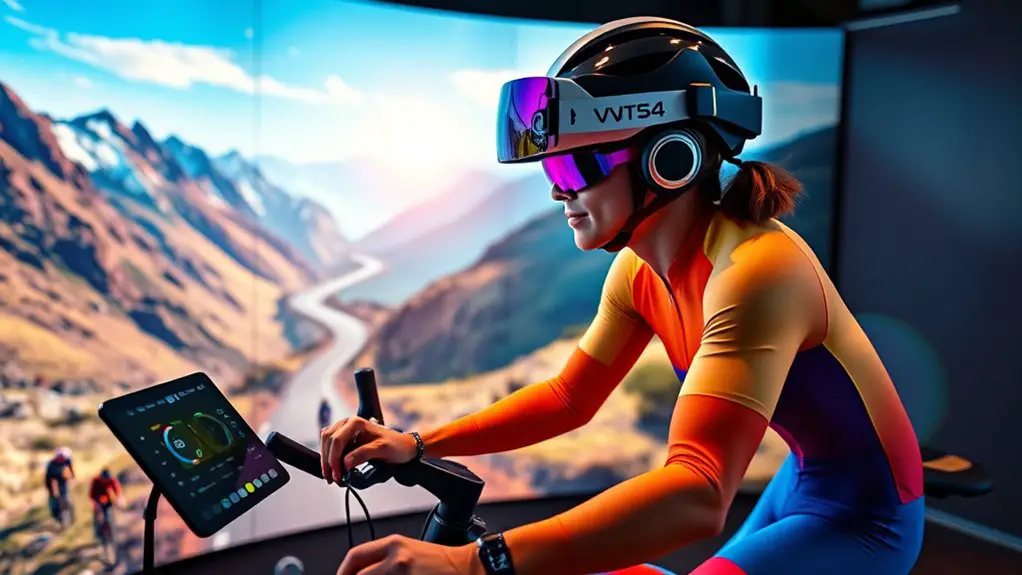
When choosing a VR cycling simulator, you’ll want to contemplate features like realistic terrain simulation and multi-user interaction options. These elements not only enhance your training experience but also keep it engaging and social. Finding the right balance between immersion and connectivity can take your indoor cycling to the next level.
Realistic Terrain Simulation
While you might be tempted to focus solely on graphics when choosing a VR cycling simulator, realistic terrain simulation is equally essential for an immersive training experience. Look for features that enhance terrain adaptability and environmental realism, as these elements can greatly elevate your workout. Consider these key features:
- Dynamic elevation changes that mimic real-world hills.
- Variable surface types, like gravel or pavement, to challenge your skills.
- Weather effects, such as rain or fog, for added realism.
- Interactive obstacles to keep you engaged and alert.
- Customizable routes that let you experience different terrains.
Multi-User Interaction Options
Beyond realistic terrain simulation, multi-user interaction options can greatly enhance your experience in a VR cycling simulator. Engaging in social cycling with friends or fellow enthusiasts adds a layer of community to your workouts. Look for platforms that allow you to ride alongside others, create group events, or even join competitive events. This not only makes training more enjoyable but also motivates you to push your limits. A well-designed simulator may offer features like leaderboards, challenges, and the ability to communicate with other cyclists, fostering a sense of camaraderie or healthy competition. So, when choosing a VR cycling simulator, prioritize those multi-user capabilities to enrich your indoor cycling experience and maintain your enthusiasm for fitness.
Comparing Popular VR Cycling Platforms
As you explore the world of VR cycling platforms, it’s essential to understand the unique features and experiences each one offers. These virtual reality systems leverage cutting-edge cycling technology to enhance your indoor training sessions. Here’s a quick comparison of popular platforms:
- Zwift: Offers immersive environments and structured workouts with multiplayer interactions.
- Rouvy: Combines real-world videos with augmented reality for a more authentic ride.
- The Sufferfest: Focuses on high-intensity training and mental toughness with engaging videos.
- TrainerRoad: Ideal for structured training plans and performance tracking, emphasizing data analysis.
- Peloton: Famous for its live classes and community engagement, making workouts feel interactive.
Each platform has distinct strengths, so consider your personal goals and preferences. Whether you’re after competition or camaraderie, the right VR cycling platform can transform your indoor training experience.
Setting Up Your VR Cycling Experience
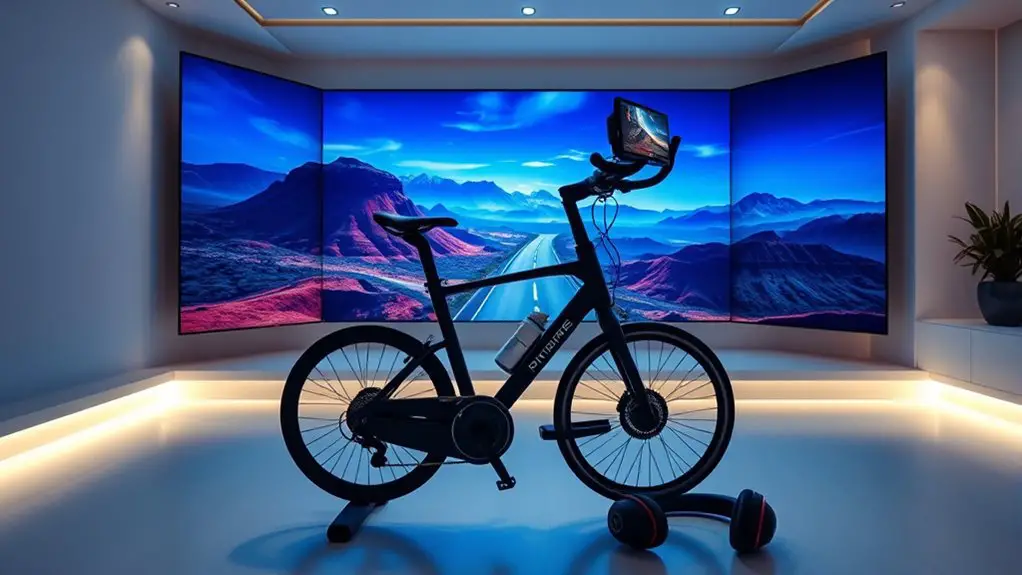
Having chosen your preferred VR cycling platform, the next step is setting up your VR cycling experience to maximize both enjoyment and effectiveness. Start by ensuring your headset setup is properly calibrated for comfort and functionality. Adjust the straps and lenses to fit your face snugly, allowing for a clear view of your virtual environment.
Next, consider your space requirements. You’ll need a clear area to move freely while cycling. Here’s a quick reference table to help you determine what you’ll need:
| Item | Requirements |
|---|---|
| Headset | Properly adjusted |
| Play Area | Minimum 6.5 x 6.5 feet |
| Lighting | Well-lit, no glare |
| Ventilation | Good airflow |
| Safety | Remove obstacles |
Tips for Maximizing Your VR Cycling Workouts
To get the most out of your VR cycling workouts, it’s essential to incorporate a few strategic practices that enhance both your performance and enjoyment. By focusing on your workout intensity and aligning it with your training goals, you can optimize your sessions effectively. Here are some tips:
- Set Clear Goals: Define what you want to achieve, whether it’s endurance, speed, or weight loss.
- Vary Intensity: Incorporate intervals to keep your workouts challenging and engaging.
- Use Metrics: Track your performance metrics to measure progress and stay motivated.
- Engage with the Environment: Immerse yourself in the virtual landscapes to maintain focus and enjoyment.
- Stay Consistent: Stick to a regular schedule to build habits and achieve your training goals.
Frequently Asked Questions
Can I Use a VR Cycling Simulator Without a Specific Bike Model?
They say, “Where there’s a will, there’s a way.” You can definitely use a VR cycling simulator without a specific bike model. Many simulators offer various bike compatibility options, allowing you to use your own bike or a compatible stationary one. Just make certain to check the simulator’s specifications to guarantee it matches your setup. With multiple simulator options available, you’ll find one that suits your needs and enhances your indoor training experience.
Are There Age Restrictions for Using VR Cycling Simulators?
When considering age restrictions for VR cycling simulators, it’s essential to check the manufacturer’s guidelines, as they often specify age suitability. Generally, many simulators are designed for users aged 13 and up, but younger users can sometimes participate with adult supervision. Always prioritize safety guidelines to guarantee a safe experience. Remember, VR can be intense, so it’s wise to take breaks and monitor how you’re feeling throughout your session.
Do VR Cycling Simulators Require a Subscription Fee?
Did you know that around 30% of VR users subscribe to platforms for enhanced experiences? When it comes to VR cycling simulators, many do require a subscription fee, often based on different subscription models. These fees can vary considerably, so a cost comparison is essential. Some platforms offer basic access for free, while others charge monthly or yearly for premium features. It’s worth exploring your options to find the best fit for your needs.
Can I Connect My Fitness Tracker to a VR Cycling Simulator?
Yes, you can connect your fitness tracker to a VR cycling simulator, depending on the simulator’s fitness tracker compatibility. Many simulators allow for tracking data integration, letting you monitor your heart rate, calories burned, and other metrics in real-time. This connection enhances your workout experience, providing valuable insights to optimize your training. Just make sure your fitness tracker is compatible with the simulator to enjoy these benefits fully!
What Is the Minimum Space Required for VR Cycling Setups?
When it comes to setting the stage for a thrilling VR cycling experience, you’re gonna want to keep a few space considerations in mind. Ideally, the minimum dimensions for your setup should be around 6.5 feet by 6.5 feet. This gives you enough room to pedal freely without bumping into anything. Remember, a little extra space can enhance your immersion and safety, so don’t shy away from carving out a bit more room if you can!
